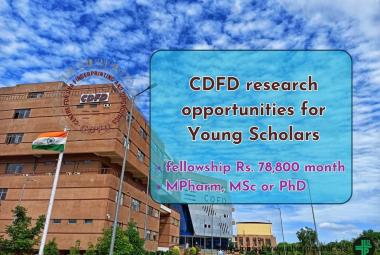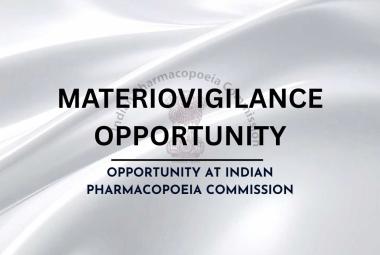About Author:
Sugumaran M., T. Vetrichelvan
Department of Pharmaceutical Chemistry,
Adhiparasakthi College of Pharmacy,
Melmaruvathur - 603 319, Tamilnadu , India
Abstract
High performance thin layer chromatographic finger print parameters had been developed for Piper betle leaf oilisolated from karpoori, sirugamani and vellaikodi variety available in tamilnadu to fix standards. At shorter wavelength (254 nm) resolution was better for, so, this wavelength can be taken for obtaining optimum HPTLC finger printing for volatile oil of this medicinal plant leaves. As per the data, Karpoori variety of piper betle leaf oil only showed presence of eugenol content. So, essential oil obtained from this variety should be included in the commercial tooth paste to get antimicrobial activity against dental pathogens when compared to other studied variety.
[adsense:336x280:8701650588]
REFERENCE ID: PHARMATUTOR-ART-1142
Introduction
Standardization of ayurvedic drugs and plant materials is the need of the day. Several pharmacopoeias containing monographs on plant materials describe only the physico- chemical parameters. Hence, modern methods describing the identification and quantification of active compounds in the plant material maybe useful for proper standardization of herbals and their formulation. Also, the world Health organization (WHO) assembly in its resolutions WHA 31.33 (1978), WHA 40.33 (1987) and WHA 42.43 (1989) has emphasized the need to ensure the quality of medicinal plant products using modern controlled techniques and applying suitable standards1,2.
Thin layer chromatography is employed to get TLC profile of various extracts and can be used in standardizing the raw drugs as well as the herbal formulations3. Ordinary TLC plates do not give better resolution particularly when the medicine involves the use of several herbs and quantification of markers by conventional solvent extraction followed by colorimetry is laborious and expensive. HPTLC offers better resolution and estimation of active principles can be done with reasonable accuracy in a shorter time 4.
[adsense:468x15:2204050025]
The Piper betle (Tamil: vetrilai)is a glabrous climbing vine belonging to the family Piperaceae . It is abundantly distributed in many Asian countries. In India it is found in Bihar, Bengal, Orissa, Tamilnadu, Andhra pradesh and Karnataka . In Tamilnadu, three varieties of Piper betel leaves, Sirugamani, Karpoori and vellaikodi are available mostly5. The chief constituent of the leaves is a volatile oil varying in chemical composition from different countries and known as betel oil. The active ingredient of piper betle oil which is obtained from the leaves are primary a class of allyl benzene compounds, chavibetol (betel-phenol; 3-hydroxy-4-methoxyallylbenzene), Chavicol ( P- allyl-phenol; 4-allyl-phenol), Estragole (P-allyl-anisole; 4-methoxy-allylbenzene), Eugenol (allylguaiacol; 4-hydroxy-3-methoxyallylbenzene; 2- methoxy-4-allyl-phenol), methyl Eugenol ( Eugenol methyl ether; 3,-dimethoxy-allylbenzene) and hydroxycatechol (2,4-dihydroxy-allylbenzene) 6. Previous studies on the betel leaves, roots and whole extract (mixture of volatile and non-volatile) of the green variety showed a very strong anti microbial activity. In the South East Asia region, piper betle L, is among the plants that have been associated with the control of caries and periodontal diseases and to the control of bad breath in traditional practice 7Mouthwashes and tablets containing pulverized betel nuts were used for the treatment of dental and periodontal diseases 8.In the current investigation, HPTLC fingerprinting of leaf oil from Piper betle Linnisolated from karpoori , sirugamani and vellaikodi variety available in tamilnadu was studied to fix standards for authentication purpose.
NOW YOU CAN ALSO PUBLISH YOUR ARTICLE ONLINE.
SUBMIT YOUR ARTICLE/PROJECT AT articles@pharmatutor.org
Subscribe to Pharmatutor Alerts by Email
FIND OUT MORE ARTICLES AT OUR DATABASE
Experimental
Plant Materials
Piper betle leaves of Karpoori , sirugamani and vellaikodi variety was collected from Sugarcane Research Centre, Trichy in the month of June 2010 and authenticated by Dr. S. Panneerselvam, Professor, Department of Agronomy, Tamil Nadu Agricultural University, Sugarcane Research Station, Sirugamani. The voucher specimen (APCP/S-87/2010) of the same was kept in Department of Pharmacognosy, Adhiparasakthi College of Pharmacy, Melmaruvathur for future reference.
Isolation of the essential oil
Fresh leaves were subjected to hydro distillation for 4 h using a Clevenger apparatus to get the essential oil9. The oil was dried over anhydrous CaCl2 and stored in sealed vials at low temperature before analysis.
HPTLC analysis:
HPTLC was performed on 20x 20 cm aluminium sheets precoated with silica gel 60 F254 Merck plates of 0.2 mm thickness. CAMAG HPTLC linear thin trough (20x20 cm) was saturated with the developing solvent(Chloroform: ethylacetate: hexane: diethylether (2.5:1.5:3.0:3.0)), for 2 hrs at 20-250°c. The sample 20 ml was applied in a 5 mm width band through LINOMAT IV in a space of 5 mm. Detection was carried at scanning wavelength 254 nm using Camag scanner II equipped with CATS 3.20 version software.
Results and discussion
The HPTLC spectrum for volatile oil of piper betle leaf from Sirugamani, Karpoori, Vellaikodi and eugenol were shown in Fig.1, 2,3 and 4 respectively. In all varieties , Rf value of each compounds which were separated on plate and data of peak area and peak height of each band was recorded. In the spectrum of Sirugamani of 254nm, about 7.02% of the compound remaining of the point of application and the remaining compound were resolved into four peaks of which the peak at Rf 0.62 showed the presence of 47.17%. The scanning of volatile oil from Karpoori at the same wavelength resolved into 4 peaks with a major compound (54.50) at Rf 0.72, while the percentage of other peaks was ranging from 10.05 to 19.02%. The volatile oil from Vellaikodi on scanning showed the presence of 4 peaks of Rf 0.04, 0.25, 0.38 & 0.60 with concentration of 9.52%, 14.77%, 19.02% and 56.69% respectively. The peak at Rf 0.60 was the major one with 56.69%. About 9.52% of the compound remained at the point of application. The spectrum of eugenol as a standard shows as 100% of the compound at Rf 0.74.
As per the data, Karpoori variety of piper betle leaf oil only showed presence of eugenol content. So, essential oil obtained from this variety should be included in the commercial tooth paste to get maximum activity against dental pathogens.
Acknowledgement
Author also thankful to Dr. S. Panneerselvam, Professor, Department of Agronomy, Tamil Nadu Agricultural University, Sugarcane Research Station, Sirugamani for his help in authentification of plant. The authors are further thankful to Director, Asthagiri Herbal Research Foundation, Chennai for providing facilities to take HPTLC finger printing.
References
1. R. Chandhury ranjit, Herbal Medicine for Human health, Regional publication, SEARO, No.20, W.H.O, New Delhi, 1992 .1-80.
2. W.H.O., Quality Control Methods for Medicinal plant Materials, Geneva, 1998 1-15.
3. M.D. Ukani , D.D. Nanavati and N .K. Mehta, Indian Drugs, 35,157-162 1998.
4. Sethi P. D., High Performance Thin Layer Chromatography: Quantitative Analysis of Pharmaceutical Formulations . 3rd Ed , CBS Publishers and Distributors New Delhi, 1996 .
5. Nandkarni’s K. M., Indian Materia Medica Vol, I. 3rd Ed, Popular Prakasan Pvt Ltd Mumbai, 2007.
6. Ghosh K., and Bhattacharya T. K., Chemical Constituents of piper betle Linn. (Piperaceae) Roots, Molecules .,2005, 10(7), 798-802.
7. Kirtikar R. K., and Basu D. B., Indian Medicinal Plant, Vol.III. 2nd Ed, International Book Distributors , Uthranchal, 2005.
8. Jenie B. S. L., Antimicrobial activity of Piper betle Linn extract towards food borne pathogens and food spoilage microorganisms, FT Annual Meeting, New Orleans, Louisiana. 2001.
9. Ashutosh Kar., Pharmacognosy and Pharmacobiotechnology. 2nd Ed, New Age International Publishers, New Delhi, 2007.
NOW YOU CAN ALSO PUBLISH YOUR ARTICLE ONLINE.
SUBMIT YOUR ARTICLE/PROJECT AT articles@pharmatutor.org
Subscribe to Pharmatutor Alerts by Email
FIND OUT MORE ARTICLES AT OUR DATABASE









